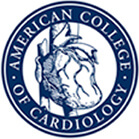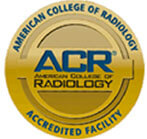What Is Peripheral Artery Disease?
- Posted on: Aug 1 2024
Peripheral artery disease (PAD) is a relatively common but serious medical condition that causes narrowed arteries. When the arteries are narrowed, less blood travels to a person’s arms and legs.
When a person doesn’t get enough blood to their legs or arms, they may suffer from leg pain when walking, muscle pain or cramping, numbness or weakness, and a weak pulse in the legs or feet. If you are experiencing any symptoms of or have risk factors for PAD, scheduling an appointment with a cardiologist is important.
The Causes of Peripheral Artery Disease
PAD is caused by an accumulation of cholesterol and fat, called plaque, in the arteries of a person’s arms or legs. Plaque buildup makes it more difficult for the blood to carry nutrients and oxygen to tissues in the extremities. Arteries have a smooth lining, promoting blood flow and preventing blood clotting. With PAD, plague causes atherosclerosis. The plaque deposits are hard on the outside of the arteries and soft on the inside.
Hard fat deposits can tear or crack the arteries, causing platelets to come into the area and form blood clots, narrowing the artery. The lack of blood flow can cause tissue damage and even tissue death (gangrene), which most frequently occurs in a person’s feet and toes.
Risk Factors for Peripheral Artery Disease
Although anyone can develop PAD, certain risk factors increase the risk of developing PAD. There are four main stages of PAD. The first stage generally doesn’t involve any symptoms. The second stage can result in leg pain during exercise. The third stage usually causes pain in the patient’s legs when resting. The fourth stage can cause ulcers or gangrene. If you’re experiencing leg pain or you have one or more of the following risk factors, you should be seen by a cardiologist as soon as possible:
- Diabetes
- Family history of PAD
- Rheumatoid Arthritis
- Smoking
- High blood pressure
- High cholesterol
- Older individuals
- Obesity
- Unhealthy diet
- Sedentary lifestyle
- Psycho-social factors
- African-American patients
- Hispanic patients
PAD is a Serious but Treatable Medical Condition
Peripheral Artery Disease is a serious medical condition. When left untreated, it can result in the need for amputation of one or both feet or legs. For 60 percent of individuals with PAD who’ve received an amputation, the expectancy for individuals is only two to five years. Although PAD is a long-term chronic illness, patients can improve their symptoms and outcomes by making healthier lifestyle choices, such as eating less fat, managing blood sugar, and giving up tobacco products.
PAD affects between 8 and 12 million Americans. However, the disease is likely underdiagnosed and reported. Some healthcare providers may not test for PAD or recognize the risk factors. As with many other heart conditions, the sooner PAD is treated and lifestyle changes are made, the better for the patient. Working with a cardiologist who will provide you with a thorough examination and pay careful attention to your symptoms is crucial.
Schedule an Appointment with a Cardiologist on Long Island
Cardiovascular Wellness provides patients with convenient, comprehensive, and up-to-date heart health care. We don’t rush patients out the door. Instead, we will take time to get to know you and listen to your symptoms and concerns. We will run all the necessary tests to identify and treat any heart conditions you may have, including PAD. Contact Cardiovascular Wellness to schedule an appointment with a skilled cardiologist.
Posted in: Heart Disease






